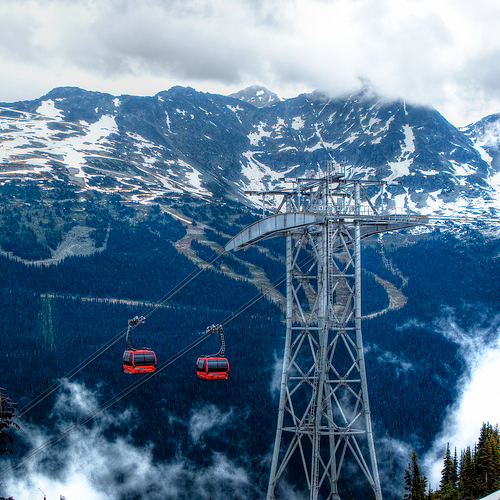Artificial snow is good for business. As global temperatures rise, resulting in a lack of natural snow, owners of winter ski resorts worldwide are forced to face the consequences and often turn to snowmaking. When there isn’t enough snow to open ski runs, artificial snow production has become a strategic key to guarantee snow cover for the entire ski season.

Snowmaking even extends the ski season, allowing many resorts to open in the fall and sometimes operate well into summer. While a long, snow-filled season is great for avid skiers and snowboarders and can be fiscally beneficial for resort-owners, snow production has serious environmental consequences. So, before you book your winter vacations, here is what you should know about human-made snow.
Since mountains are one of the most sensitive areas to climate change, the ski industry has to face real global warming consequences. The snow season is shorter and shorter due to dryer winters, rainfall instead of snowfall, and stronger snowmelt.
According to BioOne research, under climate change scenarios, the average ski season is expected to be reduced by 37-57% by 2050, threatening the whole tourism industry linked to snow sports. A shortened snow season means lower earnings and may have a terrible economic impact on regions and countries like Switzerland. The winter tourism industry is the third most important export industry. In Switzerland’s case, experts have suggested that the tourism-related losses due to climate change could be as high as $1.2 billion annually.
For these reasons, and despite the cost, ski resorts have heavily invested in artificial snowmaking to guarantee reliable snow cover and maintain as long as possible the snow season. With current snowmaking technology, the average season is expected to be reduced by 7-32% by 2050.
The snow production process loses an estimated 30% of the water consumed through evaporation.
While snowmaking during dry winters can temporarily solve economic issues, it also brings environmental consequences. First, we will explain how they make artificial snow:
Human-made snow is real snow produced by forcing water and pressurized air through a “snow gun” or “snow cannon” on ski slopes. Snowmaking machines require low temperatures, water pumps,, and air compressors that are both very large and expensive.
The production of artificial snow needs large amounts of energy and water. According to SMI Snow Makers, it takes about 75,000 gallons of water to create a 6-inch blanket of snow covering a 200 X 200-foot area. The system in a good-sized ski resort can convert 5,000 to 10,000 gallons of water into snow every minute!
Although the snow-making machines’ water pumped goes back to nature through snowmelt, moving this water around can negatively affect the plants, animal life, and water reserves.
The water loss associated with artificial snow production across the whole of the Alps is equivalent to the annual water consumption of a city with 500,000 inhabitants! Moreover, this intensive water use for snow-making and tourism occurs when water levels are generally their lowest. Therefore, water has to be transported or stored beforehand in tanks.
The creation of snowmaking equipment (tanks, pipelines, snow guns…) alters landscapes and the ecosystem, and a great deal of energy is required for water transportation.
Another significant environmental concern, and one of a ski resort’s biggest operating expenses, is power consumption. The use of snow guns, water pumps, and air systems require a lot of energy.
10,000 snowmaking machines consume 108 million kWh each season. Similarly, the pumps that provide water to the snowmakers are often run by diesel engines, which expel a high air pollution level. Artificial snow surfaces persist for roughly four weeks longer than the surrounding natural snow or snow-free surfaces.
Moreover, man-made snow is fifty times harder, four times denser, and heavier than natural snow, which tends to waterproof the soil it covers and makes soil erosion easier.
Slower to melt, artificial snow delays the seasonal thaw, occurring quite later for ski resorts with snowmaking machines. The longer this artificial snow is maintained, the larger the impact on woody plants, snow bed species, and late-flowering species.
Bird diversity is lowest near ski resorts. A study published in the Journal of Applied Ecology, 2005, suggests that ski resorts directly impact local bird communities and density, contributing to modifying their habitat and food sources.
Many bird species’ main food source is invertebrates, whose population decreases with artificial snow and longer snow cover.
Within the last 30 years, global warming has been responsible for a 10% reduction in snowfall. With the expected change in climate, winter temperatures will continue to rise; snow will become less frequent, so the trend toward extensive snow production will continue and increase. It will be crucial to monitor and regulate the expansion of artificial snow use and surfaces to protect water reserves, biodiversity, and mountainsides.